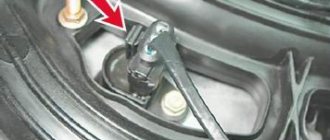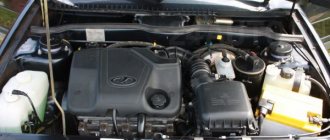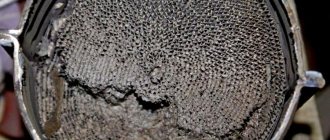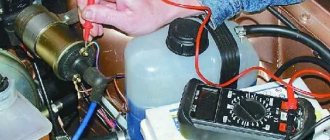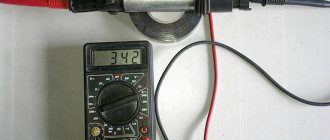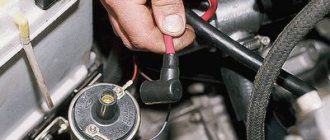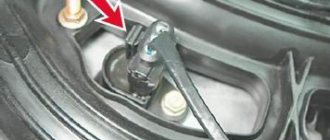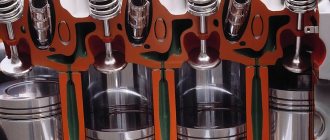Despite the huge amount of criticism against the Lada Priora, this is one of the most popular cars that have come out of the AvtoVAZ assembly line in recent years. The Priora is equipped with a fairly successful engine with good dynamics, and the interior is very comfortable. And the maximum trim levels offer useful options. But at the same time, from time to time the car brings minor problems to its owners. One of the most popular malfunctions is that the Priora engine (16 valves) is tripping. The reasons for this phenomenon are quite unpleasant. And besides, the motor eventually overheats.
When the driver starts his car in the morning, the engine does not run smoothly as before, but intermittently. At this time, dull sounds are heard from the exhaust pipe. At the same time, a persistent and strong smell of unburned fuel is felt. Vibrations are constantly increasing, and this is fraught with cracks in the pillows. This is how the engine runs when cold.
Trouble the engine: why is it dangerous?
This is a rather critical phenomenon, especially if the unit begins to vibrate during acceleration.
This behavior of the engine is especially dangerous when the driver decides to overtake, but there are cars in the oncoming lane. In the process, while the motor is running, the engine power is significantly reduced. The compression ratio decreases - there may not be enough dynamics to successfully complete the maneuver.
Considering that the Lada Priora has been manufactured since 2007, there are often instances where the engine knocks like on an old car 20 years ago. This is an engine running on three cylinders. It may have the latest firmware, but if the engine of a Lada Priora car is running rough and the check light is on, then such a car will not have much life left.
Main reasons
The car starts to act up at speed.
On the Lada there are hydraulic compensators on the valves; they automatically adjust the clearances in the valve mechanism. These devices are sensitive to oil starvation. As a result of a decrease in the level of this substance, fingers knock when accelerating the car. This knocking sound is also produced in the following situations:
- the filter or oil receiver in the crankcase is clogged,
- there is no operating pressure in the oil pump,
- Timing oil channels are clogged.
Jerking is another common problem that is associated with a short-term spontaneous change in the speed of the engine crankshaft, regardless of the position of the accelerator pedal. In daily use, a whole series of jerks appear. The limiting case of this phenomenon - failures during acceleration of the Lada Priora - is a noticeable delay in the engine's response to pressing the accelerator pedal.
There are several reasons for jerking:
- when starting to move,
- when accelerating,
- with the accelerator pedal in constant position.
You can determine the reasons why a Lada with an injection engine stalls when accelerating using special diagnostic equipment. In most cases, jerking is caused by insufficient fuel pressure in the corresponding rail, a malfunction of the mass air flow sensor or the throttle position sensor.
Supply system
If the Priora engine (16 valves) is tripping, the reasons may be trivial. When there is no flash in the cylinder, perhaps there is simply no fuel there. If it has a normal compression ratio, it is worth diagnosing the power system. You should pay maximum attention to the air filter and the pipe. It is necessary to make sure that the clamps are securely tightened, whether the purifier body itself is intact, and whether there is any air leakage from the outside. Also pay attention to the tubes. They must be tightly secured to the throttle assembly. Fuel leaks, cracks, and broken plastic may indicate that some parts are faulty.
Nozzle failures, clogging
When the Priora engine (16 valves) fails, the reasons often lie in the injector.
It may be faulty or simply blocked. Beginners and those who like to pour various injector cleaning fluids into the tank often encounter this problem. All this leads to the fact that the dirt first peels off in the tank, then in the fuel line. And eventually it will end up in the injectors, where it will happily get stuck.
Poor quality fuel
This is one of the possible reasons why the engine stalls at idle or while driving.
To return to normal operation, you can try changing the gas station. This usually helps clear up a lot of misunderstandings. It is better to fill the 16-valve Priora engine with good 95-octane gasoline. It's not worth pouring something with a higher octane number. This will only lead to overheating. You can also try replacing the air and fuel filters. Sometimes this solves the problem.
Sensors
Engine friction can be caused by 2 sensors. One of them is the idle speed sensor. If he makes a mistake, the engine will stall when cold. After warming up everything returns to normal. The problem may also be caused by the crankshaft position sensor. Usually the problem with it is visible during diagnosis.
Conclusion
. There are many engine-related malfunctions.
At the same time, even seemingly harmless ones can cause a bunch of other problems. Therefore, it is important to know all the reasons why the Priora 16 valve engine is tripping
This will help you quickly eliminate the problem, which significantly reduces engine life. It also brings closer the need for major repairs.
- Posts: 8
- From: Nyagan
November 4, 2008, 15:58 #1 123
I drove only 6500 km, the engine started to trouble, I went for diagnostics, they told me that everything was okay, I don’t know what to do, tell me what to do!
November 8, 2008, 21:50 #2 123
- Posts: 18
- From: Chuvashia Cheboksary
November 8, 2008, 21:56 #3 123
I started up at 8 thousand, the ignition coil was changed on the 2nd cylinder under warranty, and two weeks later on the 4th. Now everything is great. Did your check engine light (engine icon on the dashboard) come on? If yes, then the service station should not have told you everything was ok, since misfires are recorded in the b/c memory. By the way, I also didn’t always have gaps in diagnostics.
- Posts: 18
- From: Chuvashia Cheboksary
November 11, 2008, 10:30 pm #4 123
if this is not the case, then do a diagnostic of the injectors; if they are clogged, it’s cheaper to buy a new one (520 rubles) than to clean them with ultrasound (1500 rubles)
- Posts: 8
- From: Nyagan
November 28, 2008, 20:46 #5 123
Today I went to the service station for another diagnostic and they said I need to change the oxygen sensor, but I doubt it, what do you say?
- Posts: 8
- From: Nyagan
November 28, 2008, 20:48 #6 123
Posts: 1207
December 2, 2008, 13:42 #7 123
All errors are recorded in the ECU, but if it is disconnected from the battery, the ECU's RAM is reset to zero. Try to look for the so-called “snot”; perhaps there is a break somewhere under the insulation. If the defect appears under load, it is most likely spark plugs. Also, misfires can be associated with the knock sensor if it is not working well. Well, as I wrote above, the wires, contacts that fit to the spark plugs, to the sensors, the quality of installation is our sore spot. Call to bend, pull somewhere, the “snot” will show itself if everything else is working properly.
Posts: 1207
December 2, 2008, 2:09 pm #8 123
The oxygen sensor informs the ECU about the amount of oxygen in the exhaust gases; using its readings, the ECU regulates the duration of the injection pulse when it fails or the car stops pulling due to a lean mixture, or excessive fuel consumption begins and it idles unstably. It is located in the exhaust pipe, unfortunately, there is no way to check it, only according to the error records in the ECU, its operating temperature is 300 degrees, its operation is that depending on the amount of oxygen in the exhaust, the potential difference at the sensor output changes within approximately 0 .1 to 0.9 Volts.
December 3, 2008, 11:52 pm #9 123
Check the plugs on the intake receiver! The presence of oxygen above normal in the exhaust indicates air leakage into the intake tract.
- Posts: 8
- From: Nyagan
December 4, 2008, 20:12 #10 123
thanks to everyone, think about it, I did some chip tuning, everything worked like clockwork, it drives like a Ferrari
- Posts: 8
- From: Nyagan
December 4, 2008, 20:13 #11 123
- Posts: 32
- From: Lipetsk
March 11, 2009, 12:18 #12 123
how much does cheat tuning cost?
- Posts: 4
- From: Tambov
April 20, 2009, 21:47 #13 123
Hi all! There were also small dips under load. I replaced the spark plugs - everything disappeared and now the acceleration goes exactly as you press the pedal. The big deal is in the candles, but not always, diagnostics are necessary.
- Posts: 2
- From: Belgorod
Ignition system
An experienced car enthusiast who is faced with an engine running on three cylinders immediately begins to diagnose the spark plugs. The Lada Priora must cool well, otherwise there is a risk of getting burned when unscrewing it. If after a few seconds you turn off the ignition and check the spark plugs, one of them will be wet with gasoline. It is also recommended to separately check each part for the presence of a spark.
In case of malfunction, the problem is solved by replacing the spark plug. Sometimes it is enough to press down a potentially faulty one with a cap and the machine will resume normal operation. In general, the ignition system in this car is the most problematic part. If the Priora engine (16 valves) is malfunctioning, you can look for the reasons for a very long time, and diagnostics will not yield anything, even if it is done correctly. And only by replacing all elements can a positive result be achieved.
Inspection of high voltage wire
Often, the Priora stalls when accelerating due to a malfunction of the ignition system. This is especially true for the condition of the high-voltage wire leading to the spark plug. To inspect it, you will need to remove the tip attached to the spark plug. The structure of a high-voltage wire is as follows: the winding contains the central core of the wire. The tip, which is put on the candle, has a persistent metal penny. The main purpose of this element is to transmit current to the spark plug.
The core of the high-voltage wire should fit as tightly as possible to the “penny” of the steel tip placed on the spark plug. Due to aging, contact between this element and the wire may be lost due to oxidation of the metal. As a result, tripling occurs. The oxidation of the contact is checked as follows: with the second probe of the multimeter, you should touch the central core of the high-voltage wire; if the core of the high-voltage wire burns out along its entire length, then it is possible to identify such a section using a special multimeter tip.
The wire is pierced until the affected area is identified every 5-10 mm. If such a section is detected, it is cut off if the length of the high-voltage wire allows it. Otherwise, it needs to be replaced.
Diagnostics of spark plugs by plaque
When the engine starts cold or hot, you can check the carbon deposits on the spark plugs. If the coating is white, then this indicates a lean mixture and overheating of the engine. A black tint indicates a rich mixture. In both the first and second cases there are problems with the operation of the electronics. This is either installing new firmware, or replacing the ECU. A normal candle has a brick color. By the way, the engine may stall at idle if the part is damp. This also significantly increases the warm-up time. In addition to the spark plugs, the ignition coil may also be acting up. Priora (8 valves) is equipped with distributor ignition. Overheating of the coil is often observed. You can restore the operation of the motor by simply replacing the element.
Troubles when cold - Community "Lada Priora (Lada Priora Club)" on DRIVE2
Hi all! I recently wrote a post about a stuck pump, and so, the valves still had to be changed (( We changed all 16 valves, oil seals, and at the same time the injectors, because two had a burst housing, and the mileage was 111 thousand, the car definitely started to drive more cheerfully .But today I start it and it starts up. And I held it at 2-3 thousand revolutions, it works more or less, I release the pedal - it starts and the check blinks, and then goes out. As a result, I kept it at 2 thousand until 90 degrees, the work leveled off, I released the pedal - that's it normal. And all evening I drove everything was fine. I started it when it was hot, no problems. Right now I decided - let me check. The engine has cooled down. I start it - it troits. First - I determine the cylinder - the second. I change the coils, remove the terminal - it still troits 2. I cleaned the throttle, no changes. I just recently changed the spark plugs. Unfortunately, I don’t have a scanner at hand, but even without it it’s clear that there are misfires in cylinder 2, but here’s why? In theory, if the valves weren’t seated well, it would be misfiring all the time, right? By the way, the hydraulics are rattling alone, have you heard that they can also cause triple noise?
Thanks to those who can help with advice in advance!
PS I’ll delete the topic myself) Photo before renovation)
Checking the ignition coil
There is simply no special method by which you can check the operation of parts. The instructions for the car indicate one of the methods for self-diagnosis. So, with the ignition turned off, check whether the ignition coil (Priora is no exception) is firmly attached to the engine.
Then they look at the reliability of electrical connections in the low-voltage circuit. If everything is in order, then check for a spark. To do this, the ignition coil is removed. A test plug is inserted into the tip and pressed against a metal part of the engine. Next, turn the starter. If there is no spark, replace the coil. If there is a flash, but the engine does not start, change the spark plug.
